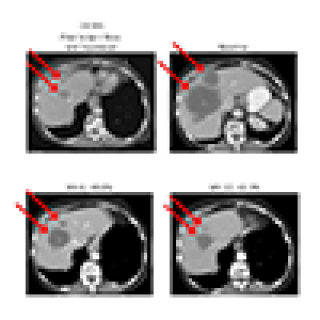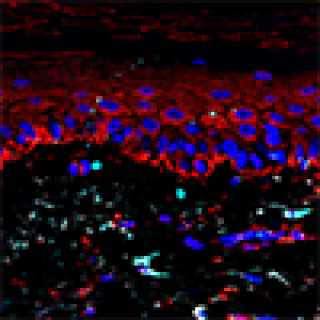Our Discoveries
New tool predicts which treatments may work best in cancer patients
A new precision oncology software tool, called SELECT, analyzes tumor transcriptomics data to predict which therapies are most beneficial for an individual patient. When applied to data from over 30 different clinical trials, SELECT was predictive of patient responses to targeted and immune therapies in about 80 percent of the trial datasets.
Read MoreDrug combination leads to durable responses in patients with small cell lung cancer
Relapse after chemotherapy is common among patients with small cell neuroendocrine cancers, including small cell lung cancer. In a new clinical study, CCR scientists found a combination of berzosertib and topotecan led to durable tumor responses in patients with these cancers.
Read MoreEngineered myeloid cells have promise as a potential treatment for metastatic cancer
A team led by Rosandra N. Kaplan, M.D., Investigator in the Pediatric Oncology Branch, genetically engineered immune cells, called myeloid cells, to deliver an anti-cancer signal to organs where cancer may spread. The results of the treatment, reported in Cell, shrank tumors and prevented metastasis in mice.
Read MoreFDA grants orphan drug designation to PRGN-2012 for recurrent respiratory papillomatosis
The Food and Drug Administration has granted orphan drug designation to PRGN-2012 immunotherapy for use in patients with recurrent respiratory papillomatosis.
Read MoreCombination therapy in patients with advanced kidney cancer found to be highly effective
A phase III international clinical trial that tested the combination therapy of nivolumab and cabozantinib in patients with advanced, untreated renal-cell carcinoma yielded promising results.
Read MoreHotspots for DNA damage and repair in neurons identified
Researchers have pinpointed hotspots along the genome of neurons where endogenous, or internally driven, DNA breaks and repair accumulate. If the breaks are not repaired rapidly, they can lead to neuron dysfunction, degeneration and death.
Read MoreNew finding reveals how some cancers gain or lose chromosomes
Some cancers have an abnormal number of chromosomes, and patients with these cancers tend to have a worse prognosis. CCR researchers have uncovered how overexpression of just one protein can cause these chromosome abnormalities – hinting at a mechanism that could be therapeutically targeted.
Read MoreDrug lessens symptoms of severe chronic graft-versus-host disease
About half of patients who receive allogeneic stem cell transplants, a treatment for blood cancer, develop a difficult-to-treat condition called chronic graft-versus-host disease (cGVHD). CCR investigators have found that pomalidomide, an immune-modulating drug, can reduce symptoms in patients with severe cases of cGVHD.
Read MoreA key mechanism that fuels uncontrolled cell growth is uncovered in yeast
Scientists have long wondered how cancer cells use a protein complex, called TOR, to survive and proliferate in nutrient-poor conditions. Now, CCR researchers have discovered how a protein that is targeted by TOR drives this process, which holds important implications for understanding cancer and some genetic disorders.
Read MorePotential therapeutic target for lung squamous cell carcinoma identified
CCR researchers have identified the protein TNIK as a therapeutic target for lung squamous cell carcinoma, the second most common type of lung cancer. Using human lung cancer cells transplanted into preclinical models, researchers found that the cells responded to a pharmacological treatment that inhibited TNIK and also resulted in cell death in the transplanted tumor cells.
Read More








